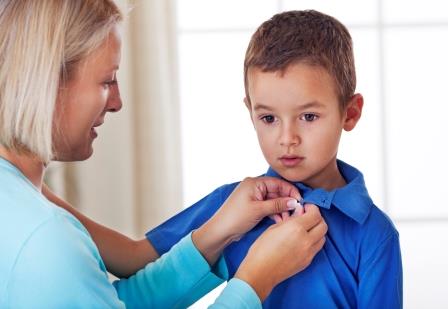If you are a fan of the TV show “The Voice”, you might remember Harrison Craig, winner of the 2013 season.
Interestingly however, while he impressed audience and judges alike with his amazing singing, he found it extremely difficult to express himself by the spoken word due to a stuttering problem.

Stuttering Statistics
Stuttering in children – also known as Childhood Onset-Fluency Disorder – is thought to impact approximately 5% of young children.
Childhood stuttering must often occurs between two-to-seven years, with 80 – 90% occurring by the age of six; it is more commonly seen in boys than girls.
Typically, the condition commences gradually with the repetition of initial consonant sounds or difficult words.
It is estimated that approximately 0.5% to 1% of adults have a stuttering problem. One of the most famous adult sufferers would have to be King George VI; the story of how he managed to overcome his stutter is the subject of the 2010 movie “The King’s Speech”, starring Colin Firth.
If you are a parent, you can take heart from these statistics as most children are able to recover from stuttering – and it is also possible for the condition to improve in adults, with professional support.
Symptoms of a Stuttering Disorder
We all sometimes have trouble getting our words out, and it’s even more common in children as they haven’t yet fully come to grips with the challenges of language – plus their mind works way in advance of their mouth!
However, parents should seek out professional help if they notice the following signs and symptoms in their child:
- monosyllabic whole-word repetition (eg m-m-m-m-my feet are cold)
- sound and syllable repetition
- sound prolongation of both consonants and vowels
- broken words or extended pauses with a word
- audible or silent blocking (filled of unfilled pauses in speech)
- use of word substitutions to avoid having to produce certain words
- the child is physically tense when trying to pronounce certain words
- the child develops anxiety over their symptoms, which then impacts on their day-to-day life eg education, socialising with peers
- and other causes of the speech disturbance have been ruled out (eg a neurological condition such as tumour or trauma, or another mental health condition).
The severity of the condition may vary according to the situation. For example, it may be less noticeable at home, but ramps up in high pressure situations such as school presentations.
You may notice your child attempting to avoid situations which exacerbate their stuttering, such as public speaking or using a phone. Physical symptoms may also occur, such as motor movements, eye blinks, tics, tremors and head jerking.
Treatment for Childhood Stuttering
As previously mentioned, outcomes are quite good for childhood stuttering.
If you are concerned about childhood stuttering, your first port of call should be your family GP.
From there, you will likely be referred to other health professionals such as speech and language pathologists as well as psychologists.
Reference:
American Psychiatric Association. DSM-5 Task Force, & American Psychiatric Association. (2013). Diagnostic and statistical manual of mental disorders: DSM-5 (5th ed.). Arlington, VA: American Psychiatric Association.
